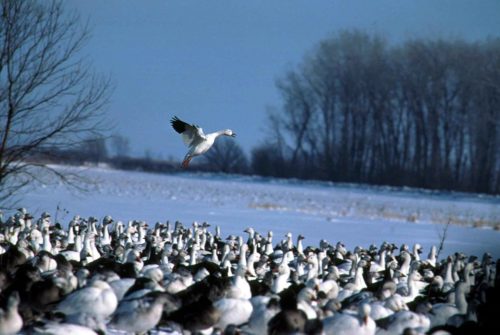Image courtesy of Menke Dave, USFWS.
Yale post-doctoral researcher Marius Somveille studies how bird migration patterns interact with Earth’s climate over time. Together with Walter Jetz, Professor of Ecology and Evolutionary Biology, Somveille recently published results from a model reconstruction of global bird migration throughout the past 50,000 years in Nature Communications.
Why birds? For Somveille, it comes down to the abundance of data on these warm-blooded, winged creatures. “We know a lot about where they are, how they move—so we can test a lot of hypotheses,” he says. Though marine mammals also migrate extensively throughout the globe, their ocean environments make them much harder to track.
Through previous research, Somveille found that the changing seasonal distributions of birds can be determined by a simple principle of energy efficiency. “You have to find a balance,” says Somveille, referring to how, in his model, different species populate different regions of the globe based on the optimization of energy gains from greater food resources, as well as the minimization of energy costs from long-distance travel.
In contrast with studies that suggest that birds largely adopt either sedentary or migratory strategies depending on conditions of glacial maxima or minima, Somveille and his team found that bird migration has remained significant throughout the last 50,000 years, even as Earth’s ice sheets have advanced and retreated. The consistency of bird migration throughout past climatic variations means that it is a solid baseline from which to predict and understand future impacts of climate change. Looking forward, Somveille is especially interested in modeling how bird migration patterns might vary within species under future climate scenarios, noting that this smaller intraspecies scale of study is the “most relevant for conservation action.”
References:
Somveille, M., Rodrigues, A. S., & Manica, A. (2018). Energy efficiency drives the global seasonal distribution of birds. Nature ecology & evolution, 2(6), 962-969.
Somveille, M., Wikelski, M., Beyer, R. M., Rodrigues, A. S., Manica, A., & Jetz, W. (2020). Simulation-based reconstruction of global bird migration over the past 50,000 years. Nature communications, 11(1), 1-9.
Zink, R. M., & Gardner, A. S. (2017). Glaciation as a migratory switch. Science advances, 3(9), e1603133.

